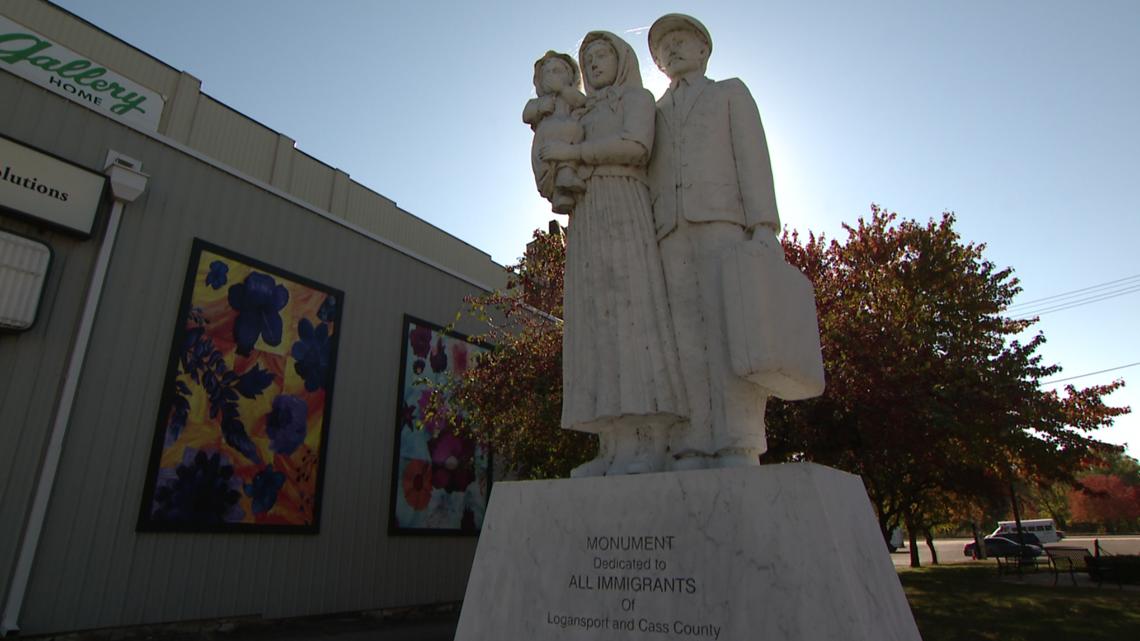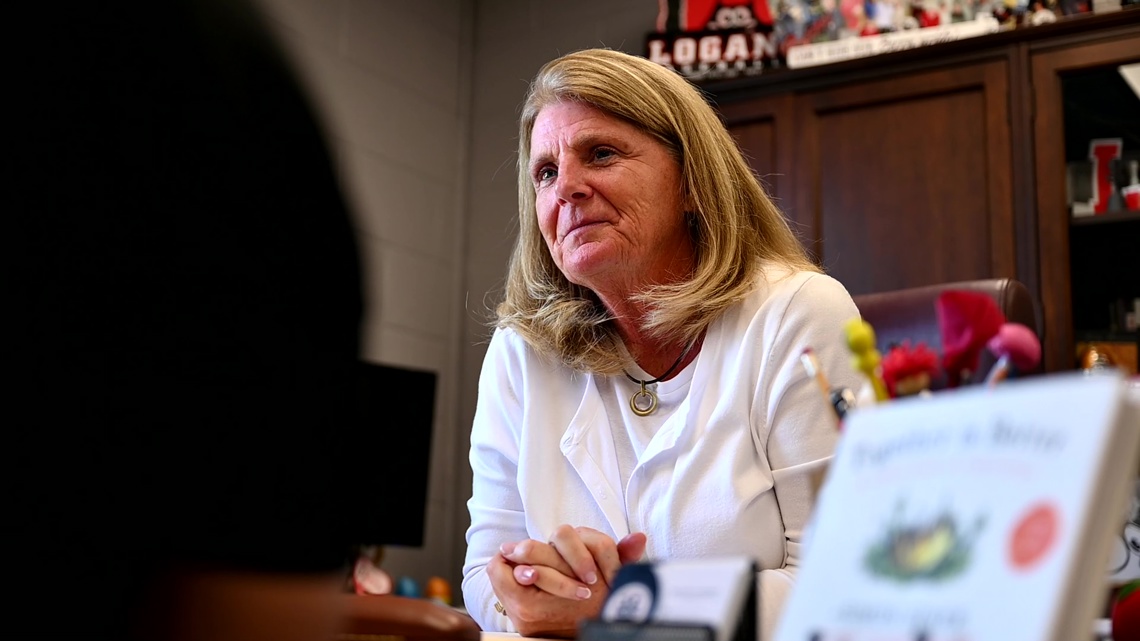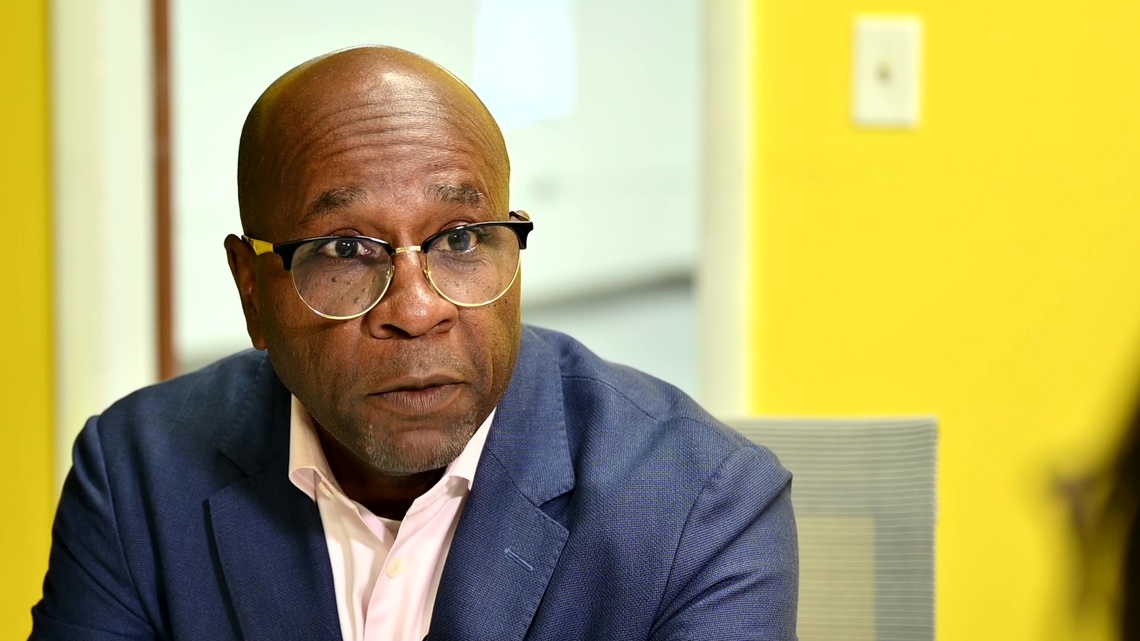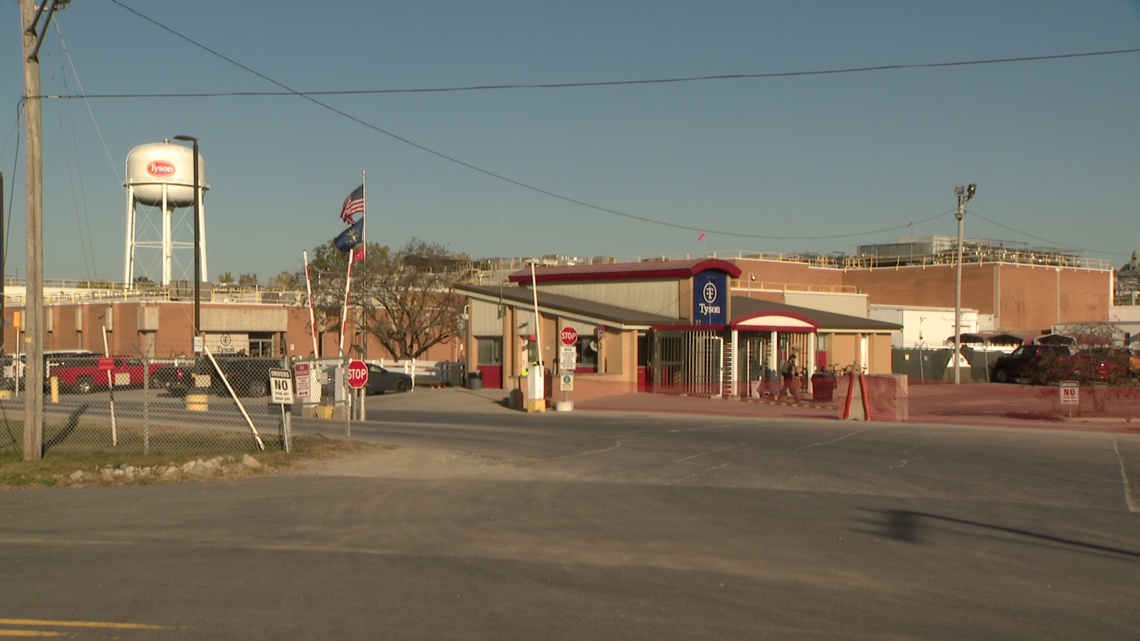LOGANSPORT, Ind. — A small Indiana city is now at the heart of the political debate about immigration.
Two weeks ago, the Republican candidate for lieutenant governor made unsubstantiated claims in a post on X claiming Haitian immigrants were being dumped in Logansport, but 13 Investigates found his estimate appears to be greatly exaggerated.
According to the US Census Bureau, Logansport has a population of 18,366 people.
Republican lt. governor candidate, Micah Beckwith, claimed — without evidence — it's much larger. He did it first in a post on X, then again in an interview with 13News.
"It was a town of 18,000 and now it's grown to 50, 60, 70,000,” Beckwith said.
Beckwith said people on the ground told him there could be tens of thousands of Haitian immigrants in the city. The city, county and law enforcement leaders 13 Investigates spoke with said they do not have evidence to support that many new people.


The campaign never released any documentation to support Beckwith’s assertions.
His Democratic and Libertarian rivals call the post a form of "fear-mongering" that "exploits" the situation for "political purposes."
So, 13 Investigates traveled to Logansport to get answers.
Mayor Chris Martin estimates there could be 2,000 to 5,000 Haitian migrants based on an increase in the use of services.
At city hall, the mayor's office reports, over the last three years, traffic stops and trash/debris violations are up, but not crime. 13 Investigates reviewed hospital annual reports for 2021, 2022 and 2023 that show births are up about 20% and ER and physician office visits are up 12-14%.
“Automatically, people are assuming that it is migration,” Martin said, “But that's not necessarily true. Again, no way to prove it."
City officials believe most migrants are in the city legally via two federal programs that help people from countries in turmoil and allow them to legally work in the U.S.
CHNV, short for Cubans, Haitians, Nicaraguans and Venezuelans, is a new Biden administration program that benefits more than half a million people, as of September. The most recent data released by U.S. Customs and Border Protection states about 40% were Haitians.
A congressional report presented in May reported 204,759 people from Haiti were beneficiaries of TPS or the Temporary Protected Status program. In total, the program helped more than 870,000 people from more than a dozen countries in 2023. The report states, 1.9 percent of those people reported living in Indiana or 16,707 people across the entire state.
The U.S. Census Bureau estimates Cass County gained 288 international migrants from April 2020 to July of 2023, ranking the 17th highest out of Indiana's 92 counties.
Several citizens voiced concern about the increase in people from Haiti during the last Logansport city council meeting. Some people demanded action and answers. The mayor said he's still figuring out exactly what the city needs. He’s now posting weekly updated on his YouTube page about the situation.
Martin said the city needs more Haitian Creole translators. He wants the federal government to pay for those services, because he blames the Biden administration’s immigration policies for the population changes.
Superintendent Michele Starkey released school data from 2021 into this school year. It shows the number of Haitian students nearly doubled year over year (2023=114; 2024=207). There were 14 Haitian students in 2021 and now there are 207 enrolled. A significant increase, that’s 4.7% of the total student population of 4,300 students.


Starkey says the influx is not negatively impacting other students. In part, because she says Logansport is used to having non-English speaking students. About half of the students enrolled with the district are English learners. Most speak Spanish.
Starkey said the district could use more Haitian Creole interpreters. Now, it has one. Seven more would put a Haitian Creole interpreter in every school.
“I don't want to say that everything is perfect, because it's not,” said Starkey. “And it does create some challenges. Anytime you have a new group, or, you know, a new group of immigrants come in, we have to learn about their culture … what they've been through … but we have to help educate them on what schools are like in the United States, in Indiana and in Logansport specifically.”


So why are Haitians moving to Logansport? Some immigrants told 13 Investigates they came to be close to family. Others said work was the draw.
"This is more economics, more than anything else,” said Leonce Jean-Baptiste the interim executive director of the Haitian Association of Indiana. "If they're leaving home, they're looking for places where they can work.”


Logansport's largest employer, Tyson Foods has a pork processing facility that the company says employs more than 2,000 people.
The company sent a statement that “the majority of those team members are American citizens or permanent residents of the United States.” The president of the worker’s union also sent a statement about the plant’s “strong multicultural community.”
Ball State economist Michael Hicks said migrants supplement the workforce and boost the city and county's declining population. He worries rumors and misinformation about Haitian immigrants could hurt the Logansport economy.
"If you demonize the place, if those forces work,” Hicks said. “What we've seen in previous examples are all types of residents stop moving here. Businesses are reluctant to relocate to an area where they don't think they're going to have access to labor and the economic conditions are weakened substantially.”


Jean-Baptiste worries about the city's new neighbors and points to how things escalated in Springfield, Ohio.
"There were bomb threats, as you probably knew, school had to shut down,” Jean-Baptiste said. “Haitians could not send their kids to school. So, it creates real danger and angst among that community."
His organization made an official statement denouncing what it calls attempts to demonize “hard-working, lawfully settled, Haitian people.” It plans to work with community leaders to help new immigrants integrate into the community.
A community, he said, is looking for a better life, with a story not too different from the immigrants who came before.

